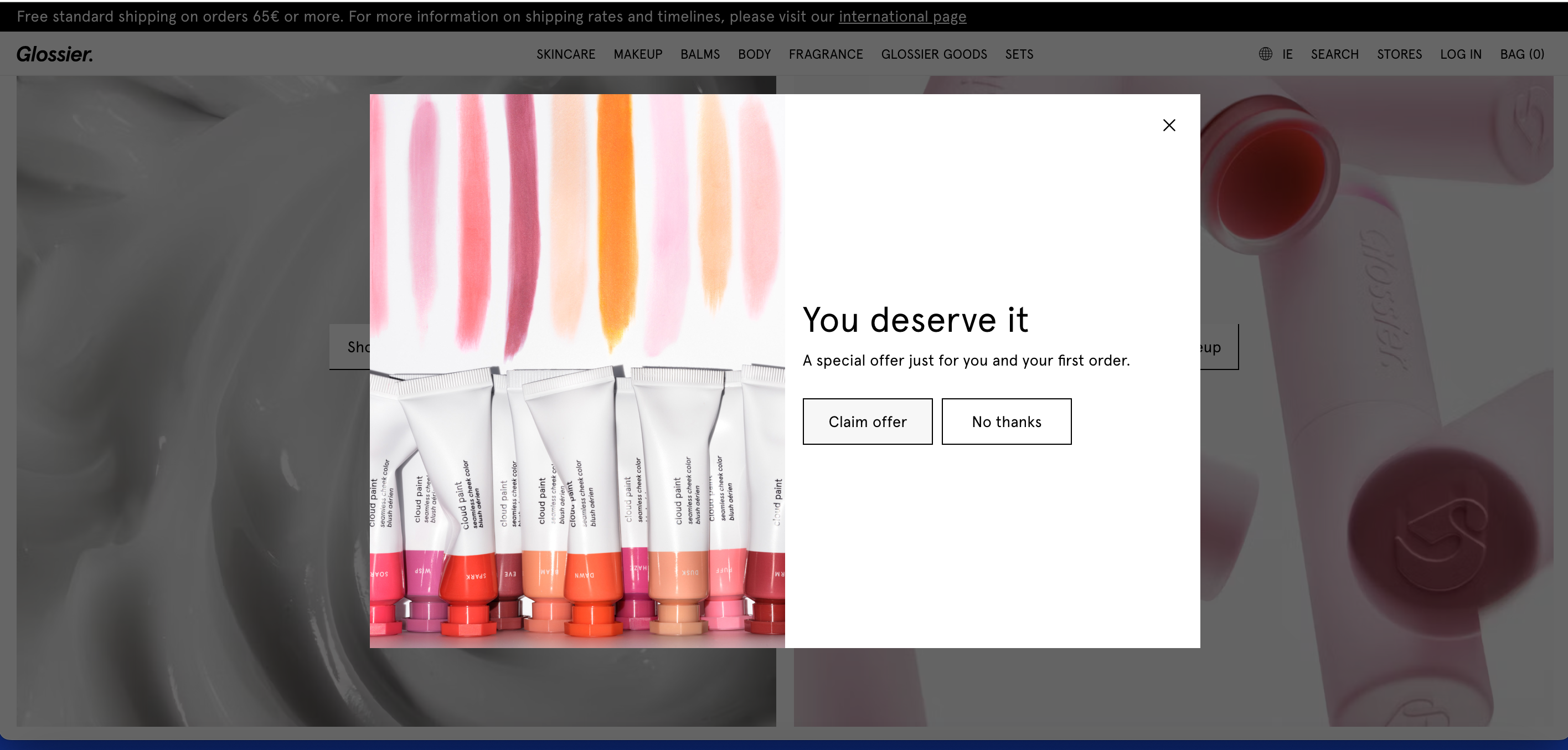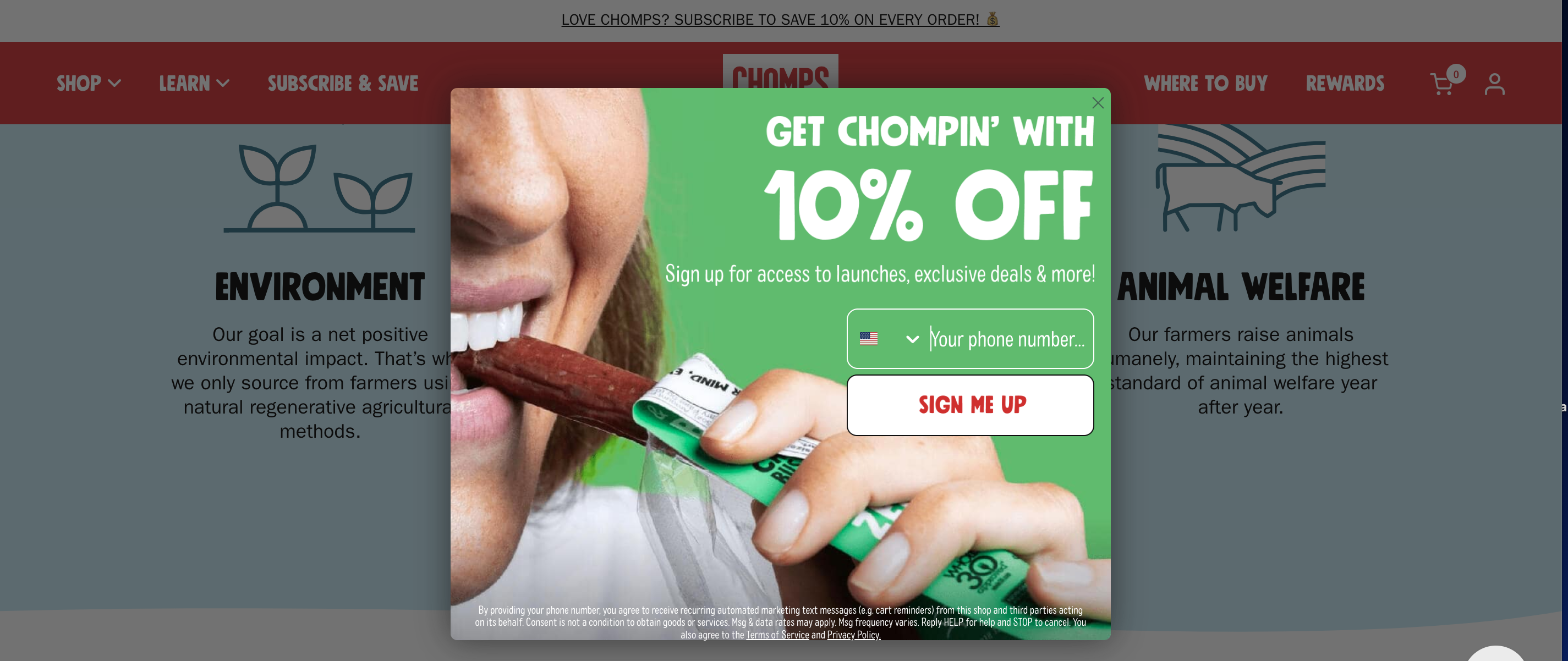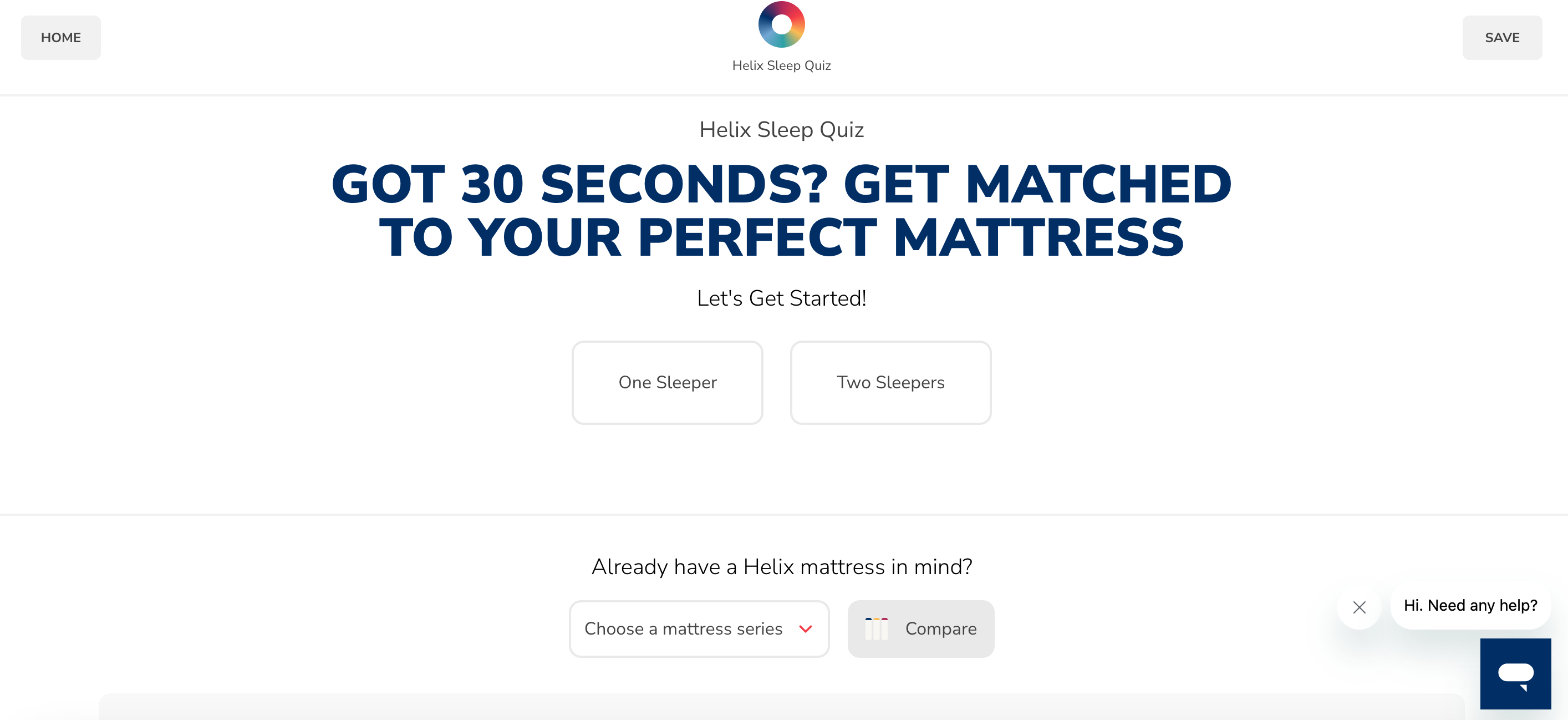Website personalization
Table of Contents
What is website personalization?
Website personalization is the process of creating customized experiences for visitors to a website.
Rather than providing a single, broad experience, website personalization allows companies to present visitors with unique experiences tailored to their needs and desires.
Personalization is by no means a new concept for businesses. Waiters will often greet repeat customers and refer to them by name, even knowing what their “usual order” is. Shopkeepers can use visual cues to provide personalized experiences—an exhausted-looking couple with three children probably wants to get what they came for and be on their way, while a single person slowly browsing the aisles might be interested in some chit-chat. The point is, in the offline world, personalization is extremely common.
The tailoring of the user experience in the real world is likely why the same McKinsey research found that 71% of consumers expect personalized experiences online — and why 76% of consumers are upset when they don’t get it.
Website personalization started as far back as the 1990s. Back then (and now), tactics looked like recommending products to customers based on past purchases and using beacons to track user behavior before the advent of cookies. In general, personalization attempts to use data to take that same level of one-on-one attentiveness and translate it into the digital world:
- Online retailers can provide targeted offers to shoppers based on browsing behavior.
- Travel sites can present visitors with promotions based on the current weather or season.
- News and other media outlets can surface specific videos to viewers based on where they live.
 Image source: Glossier dot com
Image source: Glossier dot com
With the advent of generative AI, personalization is now more accessible than before. Experts expect genAI to make it easier to overcome past obstacles to building personalized campaigns through the power of automation and even offer deeper personalization for companies who commit to data quality.
How does website personalization work?
Companies engaging in delivering personalized experiences to their customers will adopt personalization tools and personalization software to optimize the user journey.
These personalization tools will combine collected data through a customer data platform (CDP) along with AI and machine learning to assess customer behavior in real-time.
Some of the user data that is most valuable to providing a personalized experience include:
-
Browsing history
-
Geolocation
-
Demographics
-
Past purchases
-
First-party data
Personalization software will then analyze this data and create a tailored website experience that leverages dynamic content in order to meet the specific needs of the customer. This can be done with either rule-based personalization (where a personalized website experience is mapped out prior to delivery), or with AI that leverages algorithms to create new touch points and predict user behavior.
This tailored website experience can include:
-
Surfacing relevant website content like case studies and targeted web pages that were designed specifically for the customer’s affinities
-
Reshaping the web experience so that site visitors are hit with specific calls to action and more user friendly functionality
-
Delivering product recommendations based on previous customer behavior and the experiences of similar user profiles
Personalized marketing also extends beyond just the web experience. Email marketing campaigns, landing pages, and social media can also be personalized based on the actions taken by the user either on site or through data that was collected.
What are the benefits of website personalization?
What other type of marketing strategy could drive a 10-15% revenue lift for your business all on its own? The answer, according to McKinsey, is website personalization.
Consumer expectations have shifted to the point that people expect a personal digital experience that mirrors the typical level of personalization they receive offline. That’s why 83% of consumers are also willing to share their data so that marketers and web developers can deliver them a tailored experience.
The list of statistics highlighting the benefits of website personalization for marketers is long, but it all comes down to this: web personalization drives revenue and improves metrics. How?
- Drive conversion rates: Data from Google found that 63% of smartphone users were more likely to buy from mobile or app ecommerce experience when the experience delivered relevant product recommendations.
- Build loyalty: The Twilio State of Personalization survey found that 62% of businesses reported an increase in customer loyalty after investing in personalized experiences.
- Increase average order value (AOV): Recommending products, reducing the barriers to conversion, and using customer data to specifically enhance the customer experience means more than conversion: it can increase your AOV by 10%.
-
Decrease bounce rate: Users are much less likely to exit your site after one interaction if they are being greeted with relevant content.
Ultimately, investing in web personalization is investing in staying in the race: according to Twilio 75% of business leaders now say personalization is “tablestakes”. But the race for personalization or even hyperpersonalization hasn’t been won yet. Because even though marketers and executives are obsessed, customers are less than impressed.
On top of that, only 9% of executives in a recent survey noted that they have reached full implementation of their personalization efforts.
Data from all the key research, including Google, McKinsey, and Twilio reports that customers want personalization, and they’re willing to give you their data as long as you’re responsible for it. Yet, consumers report not seeing much improvement.
Website personalization examples
With the right website personalization strategy, delivering relevant content to the right audience segment via the most engaging experience—oh, and at the right time—is easier than ever.
This can materialize in many, many different ways and can be segmented by location, position in the customer journey, persona, past behavior, and more.
Let’s take an example: You’re a digital marketer for an e-commerce store in Chicago selling healthy snacks. You can personalize your homepage by displaying a pop-up to first-time website visitors from the U.S. offering them a discount.
The result might even look like this example from Chomps:
Image source: Chomps dot com
Another way to deliver a better experience is to collect data directly from the customer through a quiz module. This works particularly well when you're working with a product that customers tend to have extremely strong and very personal preferences about, like mattresses.
Image source: Helix sleep
The challenges of website personalization
For many industries — especially those that have existed for far longer offline than online — translating personalization to the digital world is challenging. It’s understandable that many retail, travel and media companies have struggled to bring the same level of personalization present in their in-person experience to their offline marketing. Some of the typical challenges include:
-
An over-abundance of non-actionable data
Companies have an abundance of data, but cannot use it to personalize digital experiences because it’s siloed in different systems. -
Knowing who to personalize for
Even if they know which audiences are valuable, companies often don’t have a scalable way to target specific messages to those audiences. Content is locked up in a content management system and controlled by developers, while visitor data is not available for targeting in real time. -
Measuring the impact of personalization
Even if they can target personalized content to valuable audiences, companies often lack a direct way to measure the aggregate impact of that portfolio of personalized content across their site over time. -
Optimization: Many companies lack any type of personalization structure, including a means of experimentation and a/b testing.
How is website personalization accomplished
Advances in technology can directly resolve many of the above challenges. To be truly effective, website personalization requires several strategies seamlessly working together:
-
Discovering audiences
This can be done by targeting visitors in real time based on the actions they take on your site (browsing children’s clothing, searching for trips to London, watching videos about a political campaign) as well as what you know about them with dynamic customer profiles (past behavior, stated preferences). -
Planning experiences
If you understand your visitors, you can create compelling on-site experiences tailored to specific audiences that appeal to them. Doing so requires you you to elegantly manage the scale and complexity of those personalized experiences. -
Continuous measurement and improvement
You should constantly measure the return on your Website Personalization investment. Not every personalized experience will resonate, so it’s important to always understand how these experiences are performing and adjust accordingly.
Your personalization efforts are only as strong as your customer data. Learn more about what this means in our post — The road to 1:1 personalization is paved with data.

